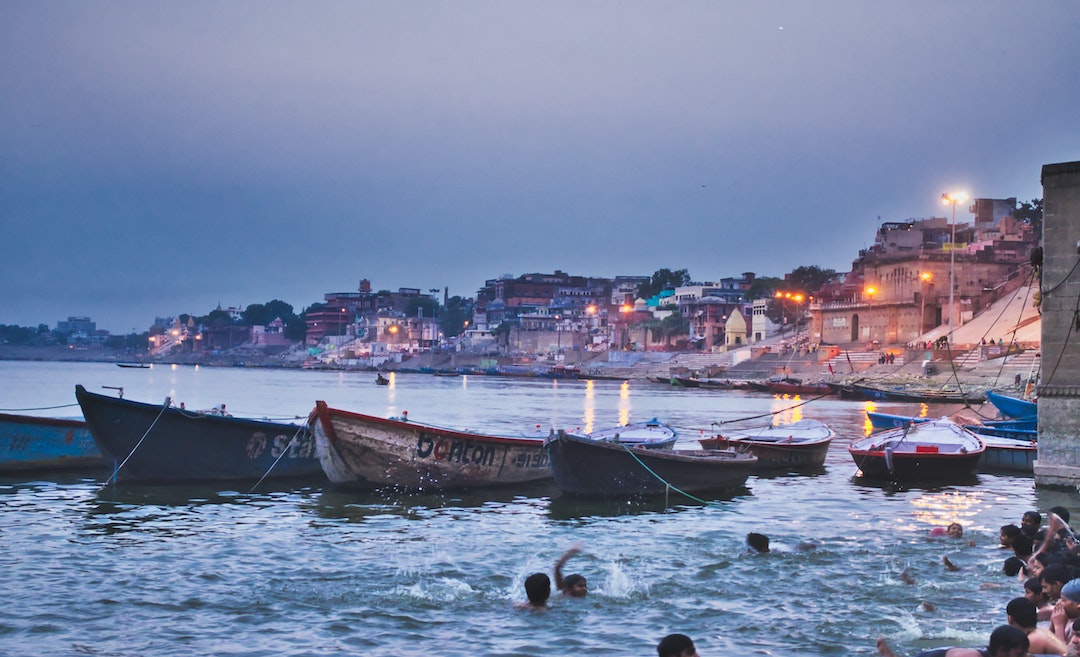
Zafigo’s Quick Guide to Varanasi for Women Travelling Alone or with Family and Friends
A city that goes by many names, Varanasi is also known as Benaras or Kashi. It’s also the oldest inhabited city in the world. Located on the banks of the holy Ganges River in India, Varanasi is the perfect place to embrace spirituality. This sepia-toned haven is an intoxicating blend of spiritual beliefs, devotional celebrations, enchanting aromas, and reverberating chants.
The devotional scenes on the ghats are therapeutic. You’ll see spectacular temples in the backdrop exude aristocratic opulence while the riverbank is an ironic melange of chaos and calm. Pilgrims take a dip in the sacred river to wash away past sins and attain moksha – liberation from the cycle of rebirth. Apart from devotees, the ghats are mobbed by sages, sadhus, beggars, and vendors. The spiritual capital boasts radiant hypnotism that sets it apart from all other destinations across the globe.
You’ll find that Varanasi is pretty intense, where daily cremations are the norm and rituals of death take place openly. The cultural immersions are not for the faint-hearted. However, the land is captivating once you get through the initial culture shock.
Here are the 10 tips for women travelling to Varanasi:
1. Best time to visit
Varanasi has a humid subtropical climate that fluctuates in the summer and winter months. If you want to explore the cultural side, winter is the best time to visit. From Dev Deepawali to Ram Leela, and finally Holi, the city unravels the age-old traditions that depict sheer magnificence. In addition, the River Ganges is filled with migratory Siberian birds that add vibrancy to everything. November to March constitutes the cooler months and the temperature drops down to 5°C.
Summers are humid and the temperature fluctuates between 32°C and 46°C. May and June are the hottest months, making it difficult for excursions and sightseeing. There are occasional rain showers and a walk along the Ganga Ghats after sunset feels refreshing.
The monsoon season in Varanasi lasts from July till September, when the region receives moderate to heavy rainfall marked by frequent showers. Temperatures are pleasant and within the 25°C to 30°C range. Thanks to the rain, Varanasi gets drenched in verdant foliage. It’s the perfect time to bask in the glory of the tumultuous Ganges and admire the sights.
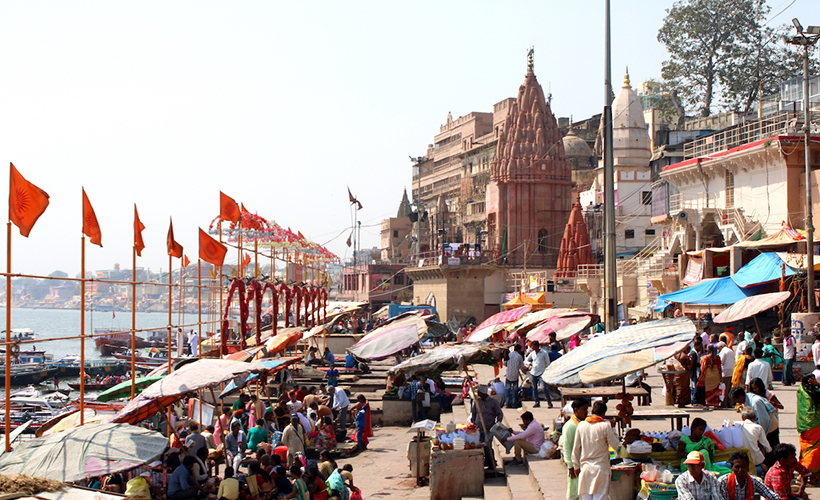
2. Getting around
There are two main options to get around Varanasi – bicycle rickshaws and auto rickshaws. They’re not usually available in the bylanes, but once you’re on the main street, they’re everywhere. Try to negotiate the price before a ride.
Hiring a cab is also convenient for exploring the city. An air-conditioned taxi is the most suitable option for excursions and day trips in the ruthless summer and prices usually start from INR1,000 (approximately USD14.40). If you prefer driving around yourself, there are a number of car rental agencies in Varanasi from where you can hire them.
Please note that the taxis and auto rickshaws are restricted from entering the Old City between 9AM and 9PM. This happens due to high pedestrian traffic. The vehicle will drop you off at Godowlia Chowk, and from there, Dashashwamedh Ghat can be easily accessed on foot (around 600 metres).
3. Soaking up the festive vibes
The spiritual authenticity in Varanasi is unmatched. No wonder it’s called the Spiritual Capital of India. The spirit of Varanasi is expressed through these celebrations and every festival is celebrated with great fervour and it’s hard not to get drawn into such grand carnivals.
Ganga Mahotsav
If you’re eager to get a closer look at Varanasi during its cultural best, head to the city during Ganga Mahotsav. This five-day event is held at Sant Ravidas Ghat and comes to an end on the day of Dev Deepawali. You’ll get to enjoy the performances of musical maestros like Vilayat Khan, Zakir Hussain, and M. Balamuralikrishna. The cool breeze of the Ganges mixed with the soothing symphony of music leaves an imprint on the soul. Apart from classical music, you can also savour a variety of cuisines and check out local handicrafts.
When: October or November
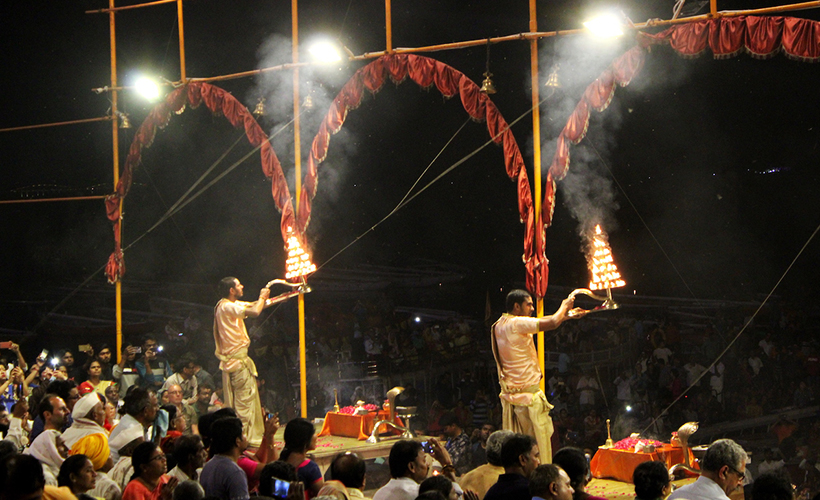
Dev Deepawali
Dev Deepawali is the grandest festival in Varanasi. It’s also known as the Festival of Lights and marks the victory of Lord Shiva over Tripurasur. Dev Deepawali is observed during the full moon (Kartik Purnima) 15 days after Diwali. On this day, the massive ghats are splashed with lights and colours. In the evening, each of the steps sparkles with rows and rows of diyas – clay lamps. This act of lighting the diyas is called Deepdan. Even the temples are beautifully lit and are a spectacle to behold.
When: October or November
Maha Shivratri
Since Varanasi is the land of Lord Shiva, Maha Shivratri has immense religious significance attached to it. According to the Puranas, the festival commemorates the marriage of Lord Shiva to Goddess Parvati. Devotees fast throughout the day and offer milk, flowers, coconuts, and fruits to Lord Shiva. All the Shiva temples are beautifully decorated and entering the iconic Kashi Vishwanath Temple is almost impossible. A grand procession usually begins in the evening and the celebration continues till early morning.
When: February or March
Holi
Varanasi turns into a kaleidoscope of colours during the time of Holi. People celebrate the festival with zeal and enthusiasm. Everyone is armed with bags full of colours and they gleefully move around the streets. From the ancient buildings to the narrow lanes, every corner is drenched in pretty hues. With every hit of colour, there’s mischief and happiness.
When: March
Ramlila
This sacred city boasts the oldest Ramlila performance in the world (going on 475 years). The history of this epic festival goes back to the days of Ramayana, and it beautifully portrays Lord Rama’s journey of life. Ramlila is celebrated for a month, and on the final day, Ram defeats Ravana and the victory is celebrated in the form of Dussehra.
When: September to October
Other popular occasions are Akshaya Tritiya, Chhath Puja, Annakut, Panch Koshi Parikrama, Nag Nathaiya, and many more.
India is known for her unique festivals, customs and traditions:
4 Indian Festivals With Unique Rituals
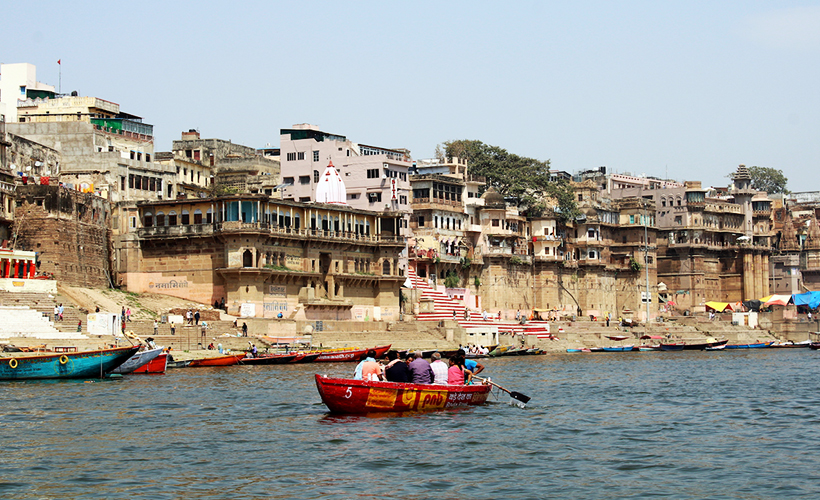
4. Things to do and see
The magical boat-ride
A sunrise or sunset boat ride along the River Ganges is arguably the best experience in Varanasi. The city looks lost in time and you can absorb the atmosphere from a different perspective. A gentle ride gives an unparalleled view of the ghats while allowing you to relax and unwind. In the distance, the chiming of the temple bells and the misty air enriched with the sweet aroma of sandalwood gives an unusual comfort. Both the morning and the evening ride is recommended to sink in the true flavour of Varanasi.
Stroll along the Ganga Ghats
Hundreds of ghats line the banks of the River Ganges. Descend down the steps and you’ll find thousands of pilgrims partaking in holy dips, rituals, and religious offerings. Visit in the morning, when the ghats look magical at dawn as the city is greeted by the first sunray. The Dashashwamedh Ghat is the busiest and also the most spectacular. Other important ghats include the Manikarnika Ghat, Assi Ghat, Harishchandra Ghat and Man Mandir Ghat. Interestingly, they give a glimpse into India’s soul and often amaze travellers with its frenetic chaos.
Discover a different side of Varanasi at Manikarnika Ghat
India is a country where the Hindu faith is deep and myriad religious practices co-exist. Undoubtedly, Varanasi is the finest example, where a walk along the auspicious Manikarnika Ghat. You can witness the funeral pyres lining the shores and being set on fire. If you’re bold enough, you can watch the open cremations from a nearby building. There are a number of guides who can help you for a small fee. Do make sure to negotiate with them.
Witness the extravagant Ganga Aarti
The majestic sight of the Ganga Aarti after sunset is a powerful ritual performed by a group of young saints at Dashashwamedh Ghat. All of them are draped in silky saffron robes and make offerings to Ma Ganga. The ritual begins with flower offerings and includes heavy lit lamps that they swing gracefully in the air. The circling of these oil lamps, blowing of the conch shells, and the fragrance of incense permeates the air and brighten the night sky. By the end of the ceremony, you’ll be able to spot countless twinkling diyas floating in the river.
Explore the temples
A trip to Varanasi is often deemed incomplete without visiting the temples. These places of worship are set in exquisite architecture and grandeur, and Varanasi has a temple in just about every nook and corner. The popular temples are associated with Hindu mythology while the smaller ones are built to perform daily rituals.
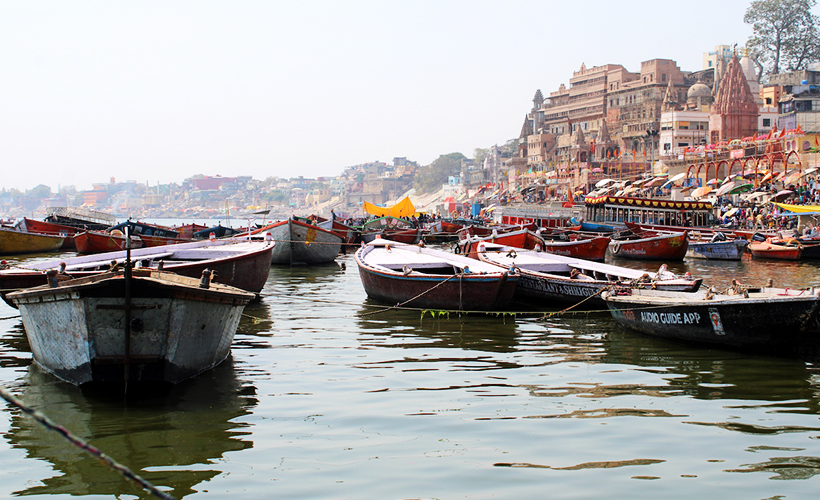
The revered Kashi Viswanath Temple is the main temple for Hindus. Dedicated to Lord Shiva, one of the 12 Jyotirlingas is enshrined in the temple. It was built by Ahilyabai Holkar in 1780. The Annapurna and the Shani Dev temples are two other important temples also worth visiting. The 18th century Durga Mandir is another well-known house of worship that comes to life during Navratri.
Traipse through the labyrinth of ancient alleys or ‘galis’
Incredible Varanasi is a maze of narrow, dusty alleyways that have a beguiling charm. You can spend hours exploring and navigating the crowded, twisted lanes. There are numerous shops selling Banarasi saris, food, handicrafts, and tucked-away shrines. You’ll also get a glimpse of the holy cows and the famous Benarasi bulls (considered the vahana, or mount, of Lord Shiva. Wander around and you will be showered with unexpected surprises.
Learn more about celestial bodies at Man Mandir Observatory
Built in 1600 by Amer Maharaja Man Singh, the Man Mandir Palace showcases jaw-dropping architecture with intricate carvings. On the roof of the palace is an ancient observatory constructed later in 1710 by Savai Jai Singh II. It houses a massive stone instrument that can observe time and measure the movement of celestial bodies.
Shop till you drop
Varanasi is known for its silk-weaving, and Banarasi silk saris are a staple in Indian marriages. Other shopping attractions include crystal or stone shivalinga (a symbol that represents Lord Shiva), wooden toys, sweets, minakari (a painting or embellishing with vibrant colours) work on metals, musical instruments, stone-carved curios, and hand-woven carpets. So scouring the busy markets at Chowk, Vishwanath Gali, Gyan Vapi, and Golghar is a must when you are here.
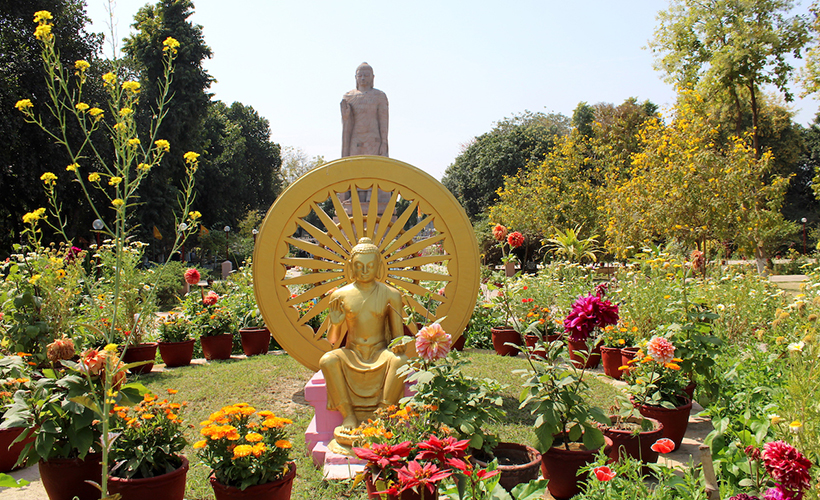
5. Guided walking tours
Take a guided walking tour and experience Varanasi in its truest sense. The heritage walks let you experience the city beyond boat trips, temples, and evening aarti (worship ritual). They are usually single day tours and prices will include a knowledgeable guide, sightseeing, and private transfers. The tours are tailor-made and have to be booked in advance. ‘Heritage Walk in Varanasi’ offers a three-hour walking tour that takes you back to old Kashi. ‘Varanasi Walks’ focuses on the journey of life and rebirth. ‘Walks of Varanasi’ features the cities most photogenic landmarks, food tours, and a heritage trail.
6. Side trips
While Varanasi has plenty to offer, if you’re in the mood for a little break, consider one of these day trips just outside the city:
Exploring Sarnath
About 13 kilometres from Varanasi is the Buddhist pilgrimage site of Sarnath. This is the village where Buddha delivered his first sermon after attaining enlightenment. Here, you’ll find the enchanting Pillars of Ashoka, as well as stupas and sculptures belonging to the 5th and 6th century.
Day trip to Ramnagar Fort
The crumbling 17th century Ramnagar Fort is the royal residence of the Kashi Maharaj. It stands erected on the eastern bank of the Ganges and boasts a striking aura. There are two temples, one dedicated to Lord Vishnu and the other to Vyasa – the writer of the great Indian epic, Mahabharata. The bizarre museum within the fort features interesting displays of vintage cars, royal attire, jewel-encrusted sedan chairs, ancient weapons, and an unusual astronomical clock.
7. Eating out
Varanasi is a paradise for vegetarians, and the food seamlessly blends with its culture and traditions. Most of the dishes are prepared in mustard oil or Desi ghee, be it sweet, spicy, or savoury.
Head to the Thatheri Bazaar and start the day with a plate of kachoris (fried bread), sabji (vegetables), and jalebi (sweet, deep-fried batter) from Ram Bhandar. Stop for authentic malaiyyo (a local seasonal sweet made from saffron milk and garnished with almonds and pistachios) at Markandey Sardar in Chaukhamba Gully. Gorge on tangy chaats (roadside snacks) from the popular Kashi Chaat Bhandar near Dashashwamedh Ghat. Another dish worth trying is their kulfi falooda (traditional ice cream over a sweet beverage). Head to Godowlia Chowk for the bhang lassi (a milk drink with cannabis) and the thandai (a milk-based drink) that Varanasi is known for. Try the iconic Banarasi paan (betel leaf and areca nut dish) at Keshav Paan Bhandar in Lanka.
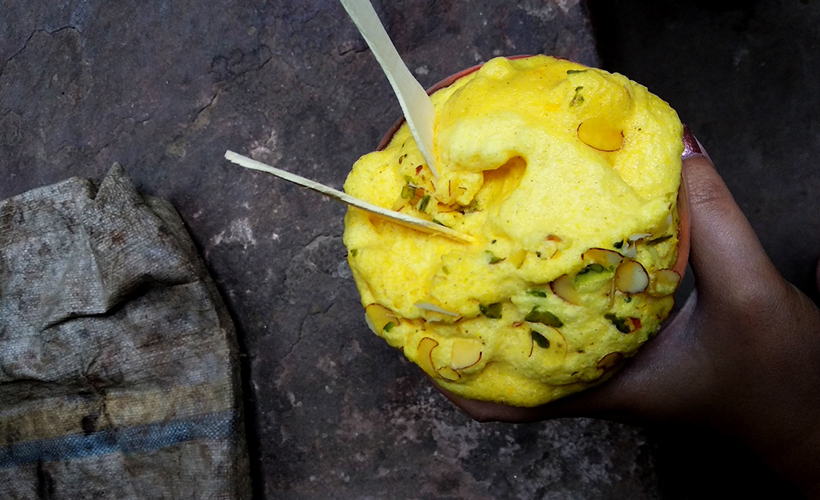
Apart from the street food, Vanarasi has countless cafes that serve a myriad cuisine. From Indian to Middle Eastern, Japanese to Italian, the list is endless. Most of these cafes and restaurants are located in and around Assi Ghat.
Some choice picks are:
• Pizzeria Vaatika Cafe, Assi Ghat – for Indian and Italian cuisines
• The Tripling Bistro, Assi Ghat – for Mexican and Middle Eastern cuisines, and burgers
• Downtown Pizza, Assi Ghat – for Italian cuisine
• Open Hand Café & Shop, Assi Ghat – for snacks and desserts
• Croodsquare, Lanka – for Indian, European, and Chinese cuisine
• Capsicum Food Court, Lanka – Italian, South Indian, and Chinese cuisines, and fast food
For anyone who thinks that Indian food is all spice, you only need to wander east for a decidedly different taste:
Guwahati Food Guide: What To Eat In India’s North East
8. Accommodation
From heritage hotels to budget stays, there are plenty of options in Varanasi. The four-star Taj Ganges and five-star Ramada Plaza in Cantonment are at the more luxurious end of the scale. Other plush options are the Clark and the Radisson.
The Old City offers a number of backpacker-friendly lodges and hostels. Zostel in Luxa Thane tops the chart. Here, you can expect clean rooms and impeccable service. There are numerous guest houses in the alleys that are close to the ghats.
Another great option is the riverside ‘Palace on Ganges’. This is a heritage hotel near Assi Ghat and gives visitors a taste of life in Varanasi. If you want to avoid the hustle and bustle, try looking for a hotel that has a travel desk that can arrange for guides, boat trips, and vehicles.
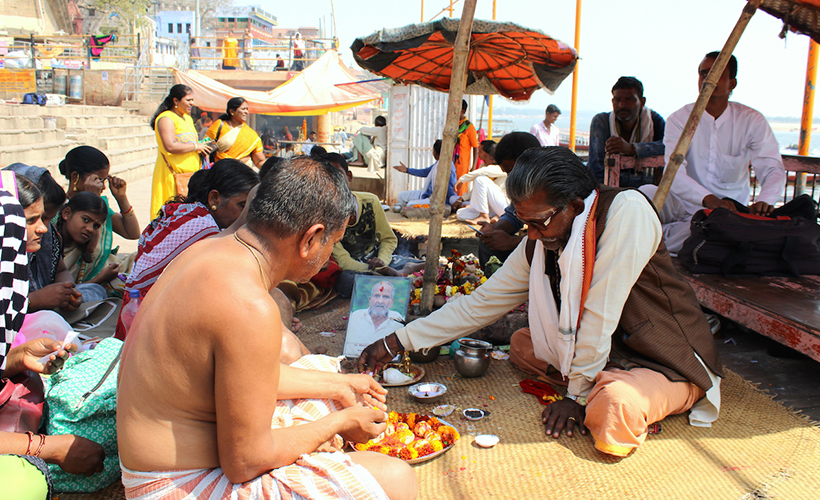
9. Dress code and safety tips
Varanasi is a place of pilgrimage and deeply rooted in Indian traditions. Hence, wearing modest attire will help avoid unnecessary stares. There’s no need to wear ethnic outfits, but anything that covers the arms and legs will do the trick.
Varanasi is crowded and open cremations happen every day. It’s natural to be concerned about your safety as a female traveller. However, the spiritual land is not as unsafe as the media portrays it to be. As long as you take basic precautions, Varanasi is a doable destination. Some extra notes:
• It’s safe to head back to the hotel after the evening aarti
• Don’t expect vibrant party scenes and avoid walking down the maze of alleys in the dark
• Don’t follow strangers to see the temples and ashrams
• During festivals, the local boys often try touching girls inappropriately, especially if one is a non-native. Thus, it’s advisable to avoid the festive season if you’re travelling alone
• Bhang lassi has edible cannabis as its main ingredient and is only available in government-approved shops. However, be careful if trying this drink. Bhang can trip you out and this might cause trouble if you’re by yourself
• Street hygiene is questionable. It’s always a good idea to have food from the shops and restaurants that are popular among the locals
• Watch out for religious scammers and touts. Most of them approach visitors asking for money to cremate their family members. Never believe them
10. Things to remember
Now that you know when to visit, where to go, what to do, what to eat, and how to stay safe, it must be said that India has a unique culture. Here are some unspoken rules to follow to get the best of your Varanasi trip:
• If this is your first trip to India, explore other places before making a trip to Varanasi. The religious complexities are overwhelming and not easy to stomach for a first-time traveller
• Try booking a river-facing hotel. That way, you can absorb the mesmerising vibe of the city
• Everyone will overcharge for the service they offer. So, negotiate
• The cremations are considered holy for the families of the deceased. Don’t take pictures
• Ask for permission from the sadhus before taking their photos. Most of the time they’ll ask for a fee
• The alleyways are confusing and you might get lost. Just keep walking; you’ll eventually end up at Ganga Ghat
All photos belong to the author unless stated otherwise.
